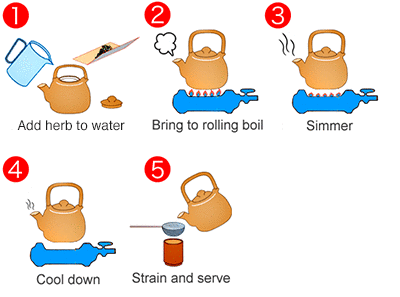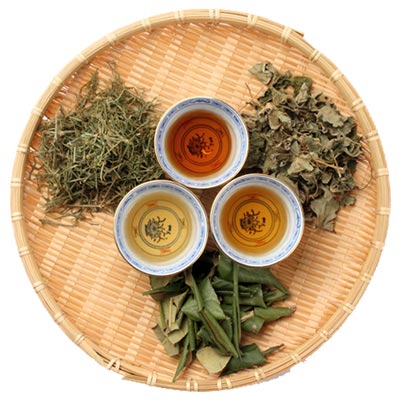Herbs have provided humans of all cultures with numerous benefits for a very long time — Bronze-age Sumerians had created clay tablets with lists of hundreds of healing herbs over 5,000 years ago.
The key to making an excellent herbal tea is to extract the maximum goodness locked deep in the herb with optimum aroma, flavor, and color.
Senjiru (to infuse, to decoct) is a traditional Japanese technique for brewing herbal teas. You can do it at home using a conventional kettle.
The steps in a senjiru-brew are a rapid boil, followed by a simmer and then a cool-down period.
You can senjiru-brew many types of herbs, including dried leaves, legumes, grains, and even hard mushrooms such as Ganoderma.
Examples of herbs Japanese commonly brew are:
How to Brew
 The following are typical instructions for brewing 4 cups of loose leaf herbal tea.
The following are typical instructions for brewing 4 cups of loose leaf herbal tea.
For brewing legumes or grains, you will need 2 to 4 times more by weight, depending on type.
Feel free to experiment and adjust to your taste.
- Add 5 grams of herb to 5 cups of cold water (you will lose about one cup of water due to evaporation.)
- Heat to a full, rolling boil.
- Turn heat down and let simmer for 10 minutes.
- Turn heat off and let cool down for 10 minutes.
- Strain and serve.
Tips for Brewing a Better Tea
- Do not stir, shake or mix the tea while brewing.
- To get the best flavor out of your tea. use fresh, good quality water (but not distilled.) For tap water, let it run cold for at least 10 seconds before using.
- Use a kettle made from a non-reactive material such as glass, ceramic, stainless steel, enamel, marble, or cast iron.

